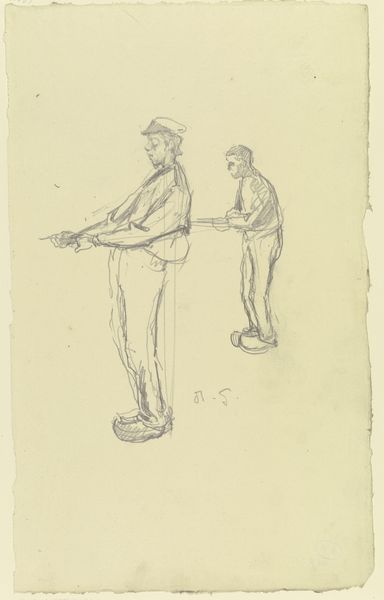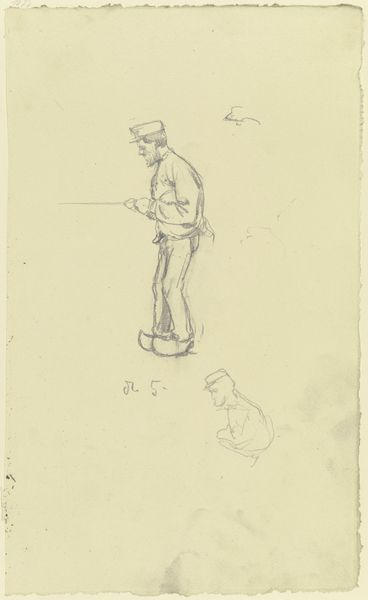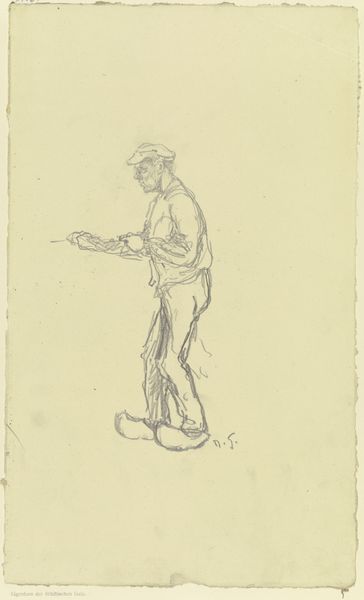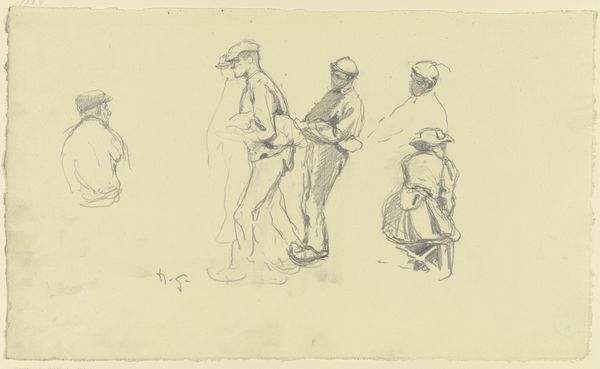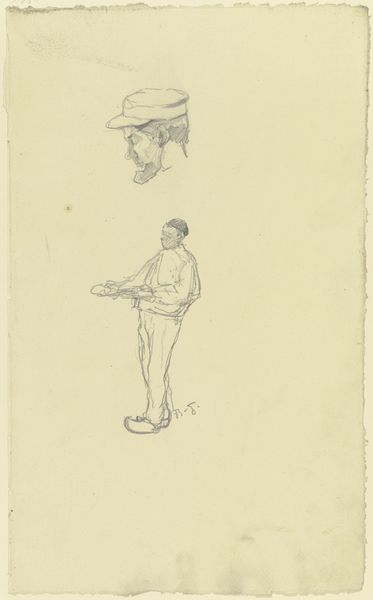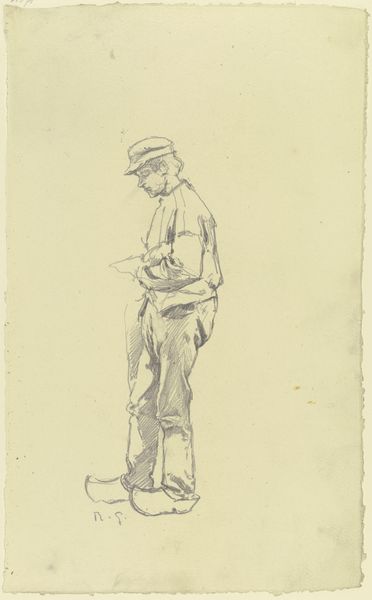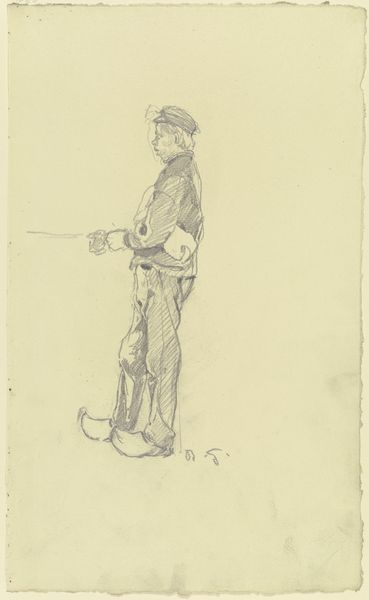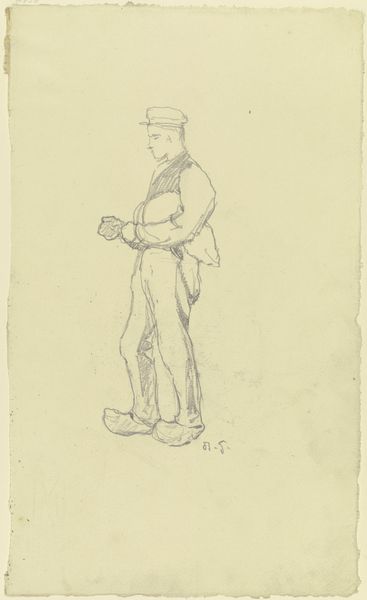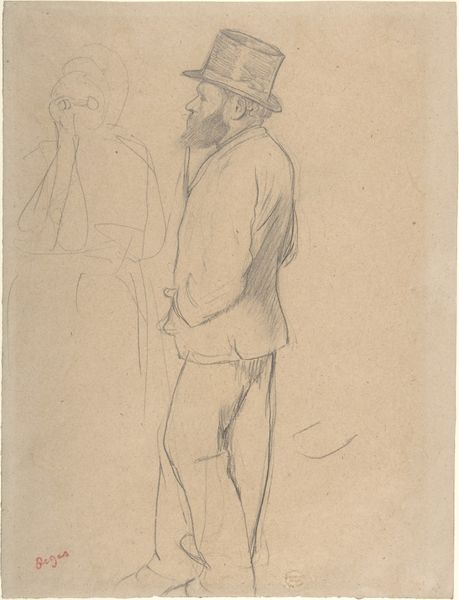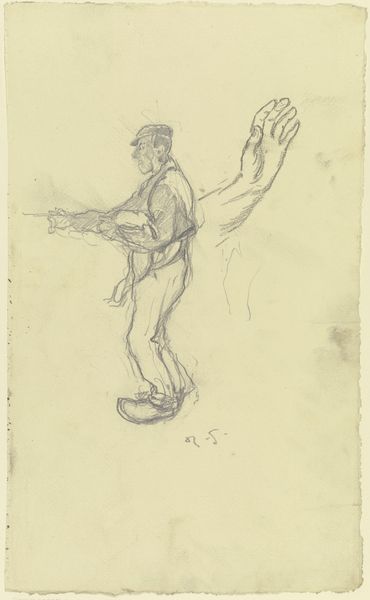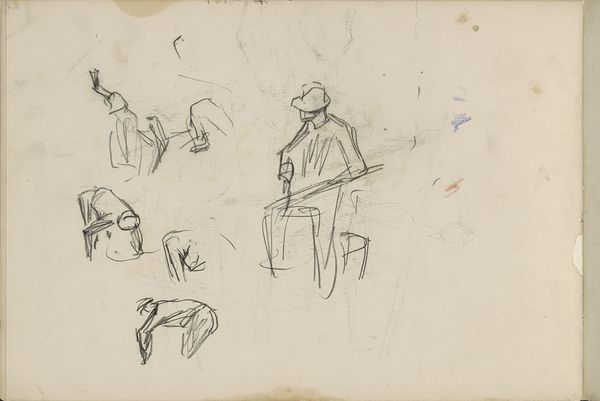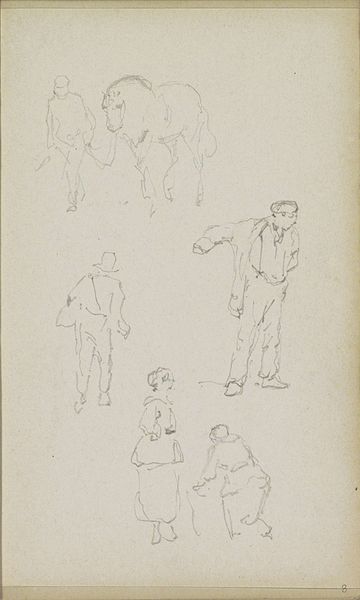
drawing
#
drawing
#
light pencil work
#
16_19th-century
#
quirky sketch
#
personal sketchbook
#
german
#
idea generation sketch
#
sketchwork
#
ink drawing experimentation
#
sketchbook drawing
#
storyboard and sketchbook work
#
sketchbook art
#
initial sketch
Copyright: Public Domain
Editor: So here we have "A Worker from the Great Spinning Mill of Edam," a drawing from around 1894 by Rudolf Gudden, currently held at the Städel Museum. It’s a really quick sketch, almost like a memory caught on paper, wouldn’t you say? What strikes you most about this fleeting image? Curator: That "fleeting" quality resonates, doesn’t it? It's as if Gudden snatched these figures from the air, impressions rather than portraits. The posture of the main figure—arms crossed, gaze averted—suggests a world of introspection coexisting with labor. Do you feel the weight of that implied narrative? Editor: Absolutely! I see this quiet dignity but also a sense of being trapped, almost. Did the "Great Spinning Mill" have specific connotations that Gudden might have been reacting to? Curator: Ah, that's the thread to pull, isn't it? The Industrial Revolution was both a marvel and a monster. Gudden, a German artist, might have been observing the human cost of progress—the repetitive strain, the disconnection from craft, the literal spinning of lives into thread. Do you think the other sketches, these almost ghostly afterimages, contribute to that feeling of unease? Editor: I do, they feel like shadows, like other possible selves lost to the mill. There's a melancholy here that really lingers. I’d love to know more about the mill itself, about Edam in that era. Curator: Exactly! And that's where the real beauty lies—an unfinished sketch inviting us to finish the story. It’s like Gudden left us breadcrumbs to find our way into a conversation about labor, memory, and the rapid transformation of the world. What a generous invitation, really.
Comments
No comments
Be the first to comment and join the conversation on the ultimate creative platform.
